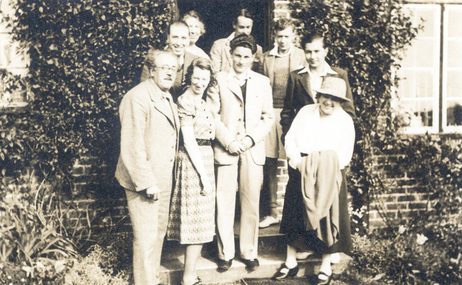Presented by Tom Appleton
Britten’s A Hymn to the Virgin, an anthem for mixed voices, is a popular work amongst choirs. A lyrical melody and effective refrain sung by a semi-chorus combine to considerable dramatic and emotional effect. It is remarkable that so accomplished a piece was written when the composer was only 16, and suffering illness. As he approached his final days at Gresham’s School in Norfolk Britten found himself with a high temperature and was confined to the school infirmary where he passed the time reading John Buchan and swotting Chaucer for his up-coming exams.
He was probably not supposed to be working on his music – that he had to rule staves himself onto blank paper indicates that printed music paper wasn’t available to him. Yet, the dullness of the sickbed didn’t halt his imagination, especially when it came to thinking about choral music. He recorded in his diary, with uncertain spelling, ‘Write … “Hym to the Virgin”, & a set of variations (3/4 of it) for organ, which are rather rubbish – I rather like the Hymn tho’’. That entry dates from the 9 July 1930. He revised the piece at the end of that year, and did further revision four years later for its publication.
The text that Britten uses is by an anonymous poet and probably dates from about 1300. It appears in The Oxford Book of English Verse 1250-1900, which he won as a school prize for music. It’s a macaronic verse; that is, a poem in which one language is introduced into the context of another. The main body of the choir sings in Middle English and another semi-chorus (or group of soloists) supplies a refrain in Latin.
The Hymn, an early example of Britten’s mastery of word setting, received its first performance on the 5 January 1931 at St John’s Church, Lowestoft. It is, in all aspects, an extraordinary work for a composer who was yet to begin his formal studies at the Royal College of Music, although its revision and refinement clearly owe much to the teaching Britten had received from Frank Bridge. A paean to the mother of God, referencing the Nativity (‘Thu bere Jhesu, hevene king’), it can be sung at any time of the year, but obviously comes into its own during the Christmas season.


